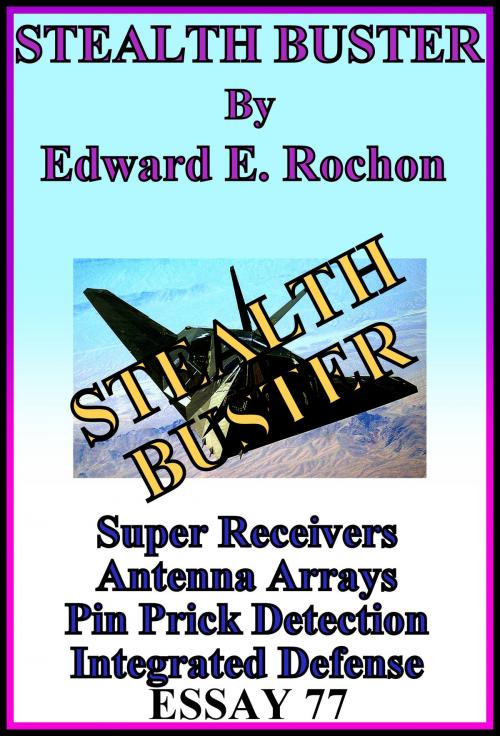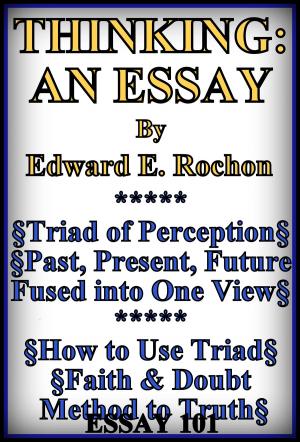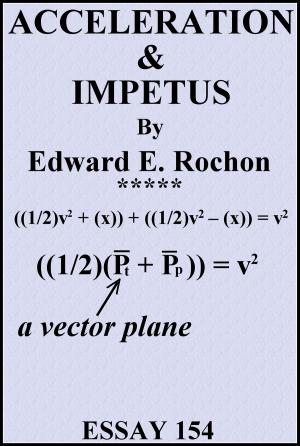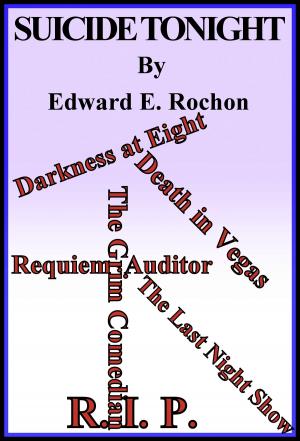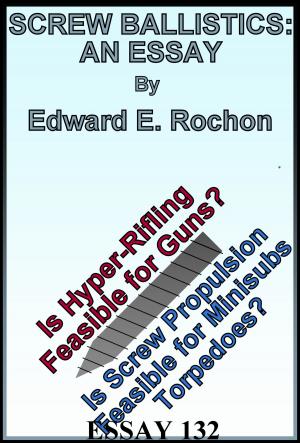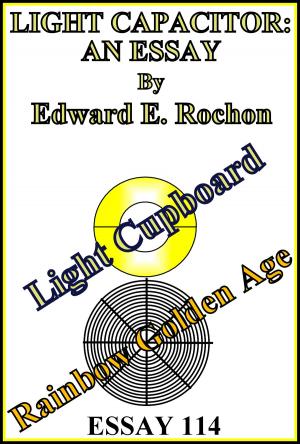| Author: | Edward E. Rochon | ISBN: | 9781310699894 |
| Publisher: | Edward E. Rochon | Publication: | June 12, 2015 |
| Imprint: | Smashwords Edition | Language: | English |
| Author: | Edward E. Rochon |
| ISBN: | 9781310699894 |
| Publisher: | Edward E. Rochon |
| Publication: | June 12, 2015 |
| Imprint: | Smashwords Edition |
| Language: | English |
The preface notes how radar led to stealth technology and the problems with active sensing. Chapter 1 covers the advantages of increasing sending power to enhance signal detection against its disadvantages. It notes that quality receivers that keep the necessity for increasing transmission power to a minimum is the best option. We favor reception sensitivity over output signal power. Chapter 2 discusses countermeasures. Pinprick: sends out narrow beam of high energy to analyze clutter on the main air search display. By using a different frequency at high power, a resolution of target as bogie or harmless might be obtained. Sporadically using fire control at extended ranges through a second amplifier might clarify target ID. Flutter Analysis: storing images for computer analysis might produce a reliable indicator of what changes the screen clutter characteristics. You might expect a plane flutter to be different from a geese flock, for example. Antenna Arrays: increasing signal input by more temporary antennas or back-up antennas on standby could illuminate a nearly cloaked plane. The bright clutter would be attached to a dim aircraft silhouette. Super Receivers: using nanotechnology to improve receiver sensitivity would illuminate faint returns from stealth craft. This is the best option in simplicity and usefulness to science and human economy. The second portion deals with passive sensing. Passive Phased Array: sonic, optical, electrostatic sensing packages on the ground and airborne that detect and triangulate stealth planes without radar. This is better than active sensing when it works. Integrated Detection: integrating information from a field army on all levels by advanced electronic communication and both passive and active sensing (when suitable) provides an impenetrable shield on a dollar for dollar spent basis against airborne intrusion. Only when field armies and fleets break up enemy unit cohesiveness can tactical airpower play a roll. Chapter 3 notes some success of stealth and smart weapons in the Iraq wars, and cautions against too much confidence in stealth and smart weapons in penetrating a modern and good military opponent. I recapitulate the benefits to society of anti-stealth technology as opposed to stealth technology. I deem the former to have many uses in science, economic infrastructure and overall well being.
The preface notes how radar led to stealth technology and the problems with active sensing. Chapter 1 covers the advantages of increasing sending power to enhance signal detection against its disadvantages. It notes that quality receivers that keep the necessity for increasing transmission power to a minimum is the best option. We favor reception sensitivity over output signal power. Chapter 2 discusses countermeasures. Pinprick: sends out narrow beam of high energy to analyze clutter on the main air search display. By using a different frequency at high power, a resolution of target as bogie or harmless might be obtained. Sporadically using fire control at extended ranges through a second amplifier might clarify target ID. Flutter Analysis: storing images for computer analysis might produce a reliable indicator of what changes the screen clutter characteristics. You might expect a plane flutter to be different from a geese flock, for example. Antenna Arrays: increasing signal input by more temporary antennas or back-up antennas on standby could illuminate a nearly cloaked plane. The bright clutter would be attached to a dim aircraft silhouette. Super Receivers: using nanotechnology to improve receiver sensitivity would illuminate faint returns from stealth craft. This is the best option in simplicity and usefulness to science and human economy. The second portion deals with passive sensing. Passive Phased Array: sonic, optical, electrostatic sensing packages on the ground and airborne that detect and triangulate stealth planes without radar. This is better than active sensing when it works. Integrated Detection: integrating information from a field army on all levels by advanced electronic communication and both passive and active sensing (when suitable) provides an impenetrable shield on a dollar for dollar spent basis against airborne intrusion. Only when field armies and fleets break up enemy unit cohesiveness can tactical airpower play a roll. Chapter 3 notes some success of stealth and smart weapons in the Iraq wars, and cautions against too much confidence in stealth and smart weapons in penetrating a modern and good military opponent. I recapitulate the benefits to society of anti-stealth technology as opposed to stealth technology. I deem the former to have many uses in science, economic infrastructure and overall well being.
